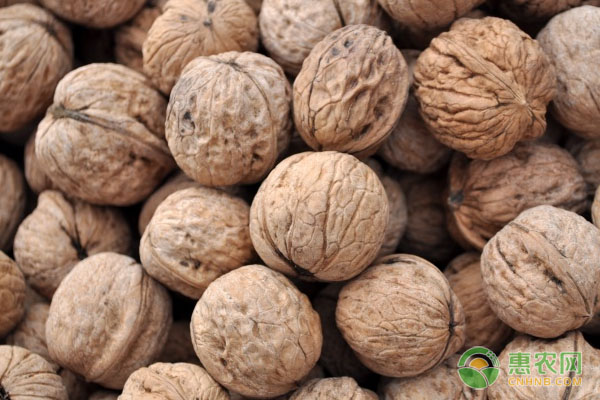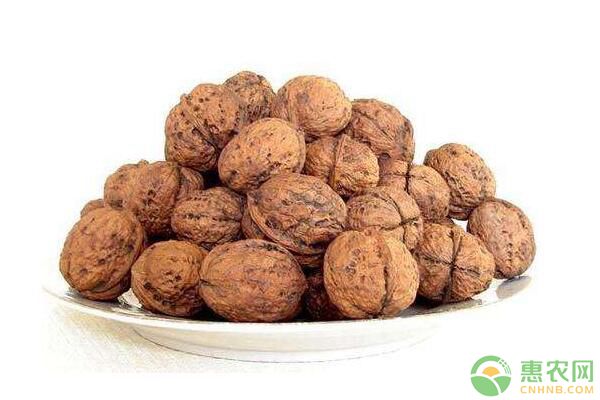Key points of cultivation management techniques for thin shell pecans in Jixian County, Anhui Province
Qixian County of Anhui Province is a subtropical monsoon humid climate with an annual average temperature of 15.7 °C, an annual maximum temperature of 40.8 °C, an extreme minimum temperature of -14.8 °C, and a frost-free period of 239-241 days, which is related to the climate characteristics of thin-shelled pecans. It is a coincidence, so today Xiaobian will briefly talk about the technical points of cultivation and management of thin-shelled pecans in Minxian County, Anhui Province.

1 Selection and finishing of planting land
1.1 Choice of planting area
The thin-shelled pecans are suitable for growth in the deep and fertile sandy loam soil; the thin-shelled pecans are not drought-tolerant, water-resistant, and warm and humid. The suitable range for soil pH is relatively wide, and the pH is slightly acidic at 5.8-8.0. Micro-alkaline soil can be planted; thin-shelled pecans need to be more than 220 d in the frost-free period, the annual accumulated temperature is 3 500-5500 °C, and the average daily temperature in summer is 24-29 °C, which can also grow at -29--18 °C; Shell pecans are relatively strict in terms of light conditions and sensitive to light reactions; in terms of slope, mountain fields below 5° can be fully machined.
1.2.2 Site preparation
The site should be completed before planting. When we are preparing the land, we must first clean the weeds, deepen the soil, excavate the planting ditch with a depth of about 100 cm and a width of about 100 cm, then add the firewood at the bottom of the ditch, and follow the cake fertilizer 500 kg/hm2, the quicklime 700 kg/hm2 and the phosphate fertilizer 750. The standard mixed topsoil of kg/hm2 is backfilled, the backfilling depth is 20cm, then the standard compound fertilizer of 750 kg/hm2 is applied, and then the remaining loose soil is filled into the trench, and the fill is 20 cm above the ground.

2 sowing
It can be sown in spring and autumn, generally in autumn. In the fall, all the seeds should be planted before the soil freezes. In the autumn sowing, high ridge seeding is adopted. When planting, the umbilical hole should be downward, the thickness of the covering soil is 5 cm, the ridge distance is 60-80 cm, and the seed spacing is 8-10 cm.
3 seedling planting
Seedling planting must first consider the impact of planting time. Generally choose the dormant period from the winter deciduous to the spring before germination, choose the annual grafting seedlings with a diameter of more than 1 cm, developed roots and no pests and diseases. The grafted rootstock can use wild walnuts to control the length of the development branch to 30 cm and the diameter of 1.0. ~ 1.5 cm, the full bud in the middle and lower part of the scion is used as a bud. In the control of planting density, it is necessary to make rational use of land light energy, for example, planting at 8 m × 10 m, planting 8 plants at 667 m2; planting at 4 m × 10 m, planting 16 plants at 667 m2. Watering after planting.
4 Fertilization
The fertilization of the walnut tree needs to determine the fertilization scheme according to the pH value of the soil and the soil type, and ditch the fertilization around the canopy according to the plant size. In the process of fertilization, the surrounding weeds should be cleaned, and the organic fertilizers such as cake fertilizer and manure should be applied in an appropriate amount; the urea should be added before the germination in spring, and the measures of water accumulation should be done; the results should be fertilized twice a year, and the sulcus should be opened along the tree tray in February. Applying corn stalk 20.0 kg and large manure 5.0 kg; July fertilization is mainly ternary compound fertilizer, and 1 m2 is applied 0.2 kg.

5 irrigation
The irrigation time is mainly concentrated in two time periods. One is that the fruit growing period in April-May needs sufficient water supply, and the other is the fruit filling period in the late summer stage, which is irrigated every 2 weeks. The irrigation link needs to be based on the difference of the canopy. Determine the amount of water required.
6 plastic trim
Early pruning should be light, and the upper branches of the canopy should be kept as much as possible. The lower part of the canopy can be gradually thinned, and if necessary, the dense branches can be sawed. For young trees, when the trunk grows to 1 m, it is artificially topped, and in the second year, three or four branches are retained. In the third year, the new shoots are topped, except for pests and diseases.
7 Pest Control
Common pests and diseases include aphids, chafers, beetles, moths, etc.; the prevention and treatment methods have the following specific points: prevention and control by black light trapping; using artificial synthetic attractants to trap; selecting non-toxic or toxic pesticides in larvae Spraying dichlorvos or trichlorfon and other agents for prevention and treatment.
8 Fruit Management and Storage
The harvest time of walnuts is from October to November, and 1000 times of ethephon is used for ripening 30 days before harvesting.
Clinic Nitrile Gloves,Nitrile Gloves Small,Medical Gloves Unsterilized,Nitrile Gloves Powder Free Latex Free
Puyang Linshi Medical Supplies Co., Ltd. , https://www.linshihealths.com
